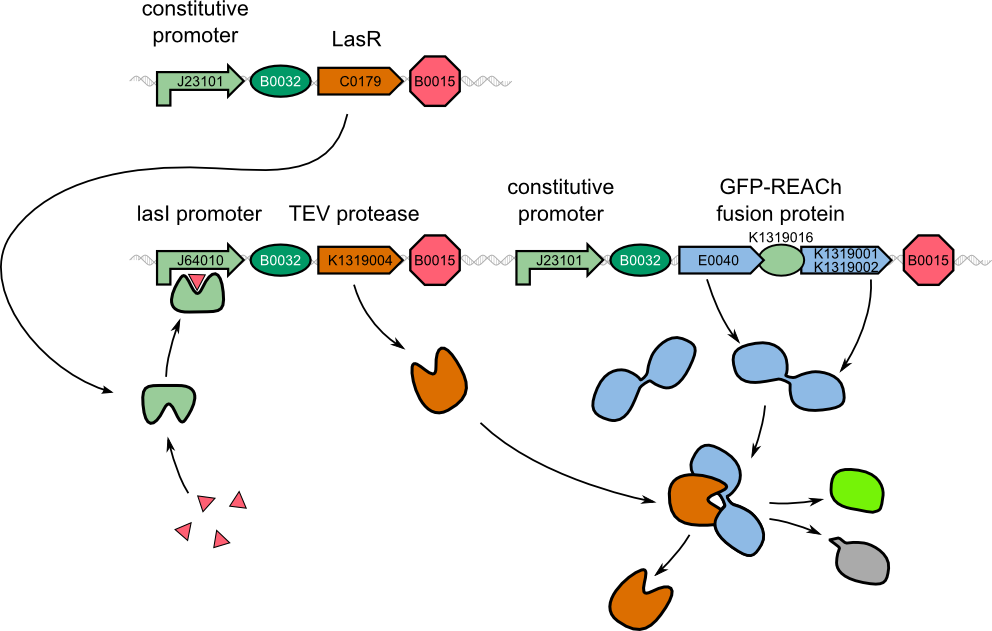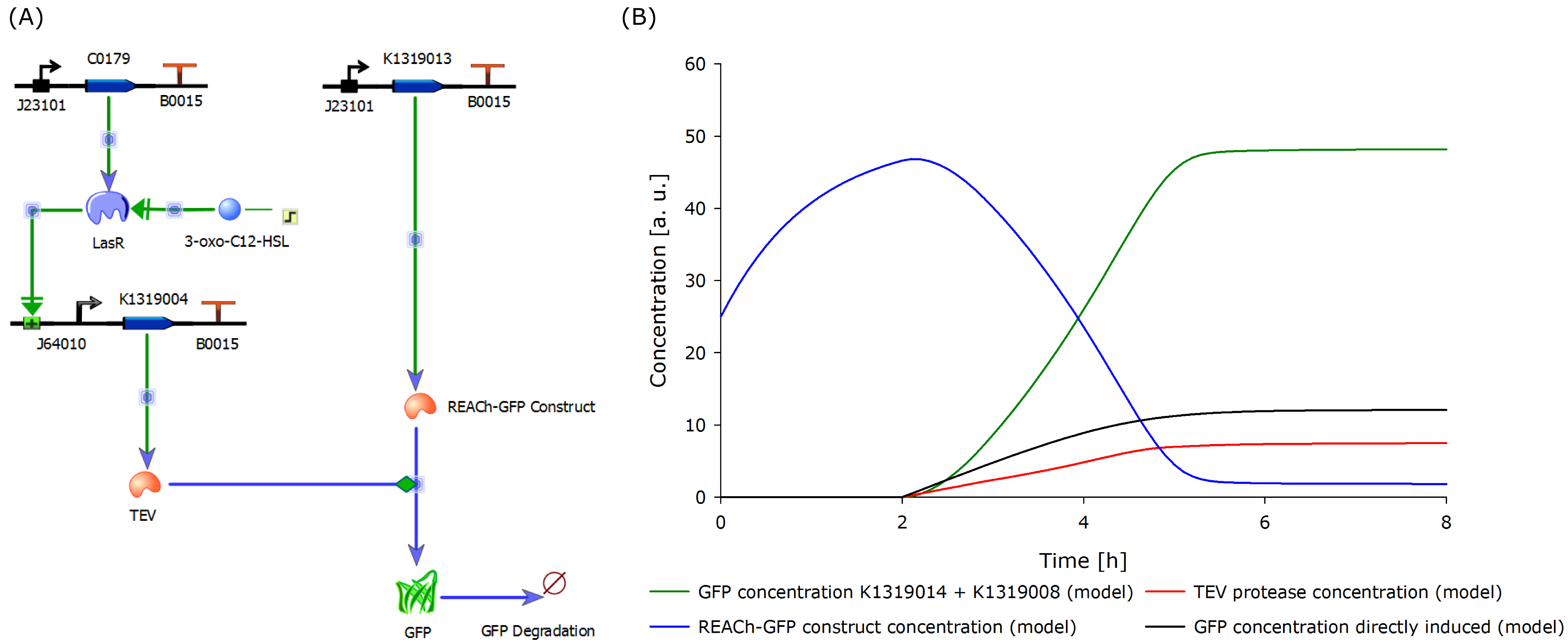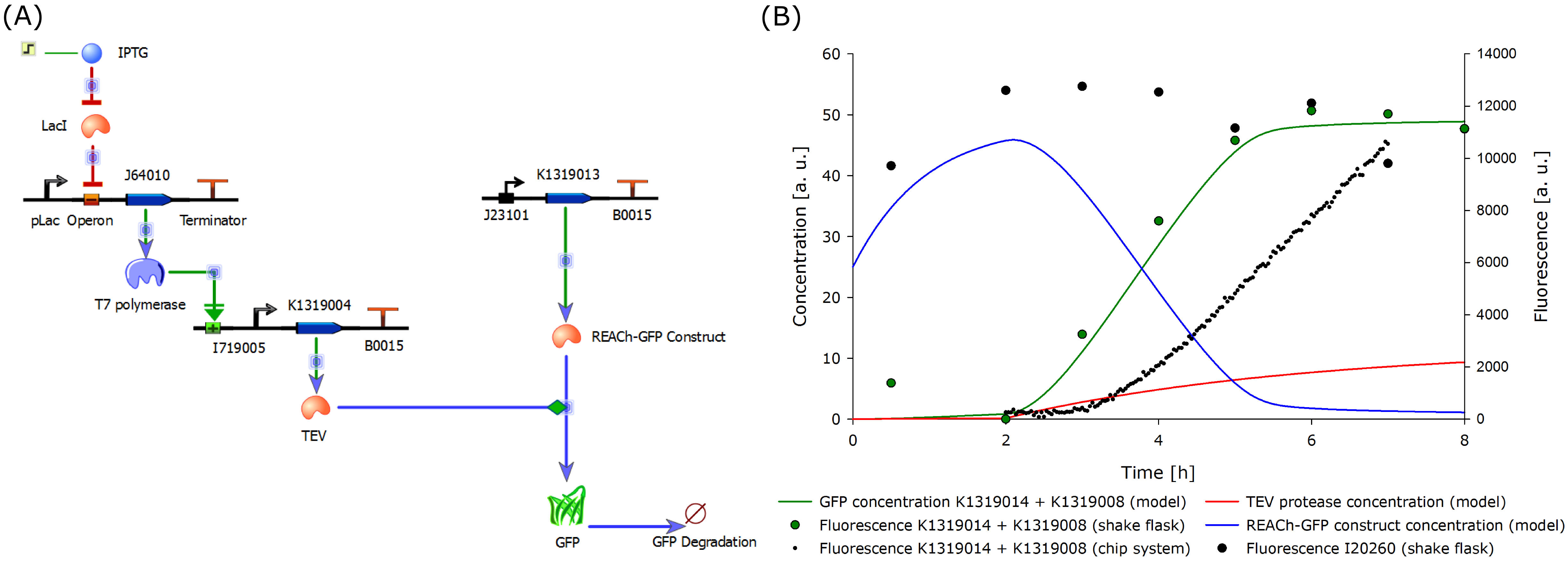Team:Aachen/Project/Model
From 2014.igem.org
m (→Modeling) |
m (→Modeling) |
||
| Line 5: | Line 5: | ||
=Modeling= | =Modeling= | ||
| - | + | For our two-dimensional Biosensor, we thought of different methods to generate faster and stronger fluorescence responses from weak promotors. We were inspired by a recently published engineered ''dark quencher'', called REACh, that is able to extinguish the fluorescence of EGFP. In our system, we wanted a fusion protein of EGFP with the dark quencher to be cleaved by the very efficient TEV protease that would then be introduced behind the weak quorum sensing promotor. | |
| - | + | ||
| - | + | ||
<center> | <center> | ||
| - | {{Team:Aachen/Figure|Aachen 14-10-16 REACh approach iFG.png|align=center|title= | + | {{Team:Aachen/Figure|Aachen 14-10-16 REACh approach iFG.png|align=center|title=An amplified reporter system|subtitle=Expression of the TEV protease is induced by 3-oxo-C<sub>12</sub>-HSL. The protease cleaves the GFP-REACh fusion protein to elicit a fluorescence response.|width=800px}} |
</center> | </center> | ||
| + | To determine if this idea was actually feasible, we decided to model the system using the CAD tool TinkerCell (Chandran, Bergmann and Sauro, 2009). | ||
<center> | <center> | ||
| Line 21: | Line 20: | ||
The novel biosensor approach was modeled as shown above. The plotted results also include a model of a direct expression of GFP as it appears in traditional biosensors. The strength of the promotor used for the traditional approach is twice as high as the strength of the promotor upstream of the TEV coding sequence in our novel approach. Despite the stronger promotor, a '''higher GFP concentration is generated in the model of the novel biosensor''', proving the stronger and faster fluorescence response of our construct in theory. | The novel biosensor approach was modeled as shown above. The plotted results also include a model of a direct expression of GFP as it appears in traditional biosensors. The strength of the promotor used for the traditional approach is twice as high as the strength of the promotor upstream of the TEV coding sequence in our novel approach. Despite the stronger promotor, a '''higher GFP concentration is generated in the model of the novel biosensor''', proving the stronger and faster fluorescence response of our construct in theory. | ||
| - | A first approach was made to correlate the experimental data gathered from the characterization of the double plasmid system K1319014 + K1319008 to the model. This is inducible with IPTG instead of 3-oxo-C<sub>12</sub>-HSL as it contains the lac operon and is therefore a negative regulatory system. | + | A first approach was made to correlate the experimental data gathered from the characterization of the double plasmid system K1319014 + K1319008 to the model. This is inducible with IPTG instead of 3-oxo-C<sub>12</sub>-HSL as it contains the lac operon and is therefore a negative regulatory system. |
Although the modeled system and the existing system differ regarding the induction mechanism, the correlation was high. However, since the final 3-oxo-C<sub>12</sub>-HSL inducible construct could not be built in time, a new model was designed according to the existing and functional double plasmid system. | Although the modeled system and the existing system differ regarding the induction mechanism, the correlation was high. However, since the final 3-oxo-C<sub>12</sub>-HSL inducible construct could not be built in time, a new model was designed according to the existing and functional double plasmid system. | ||
Revision as of 21:06, 17 October 2014
|
|
 "
"


